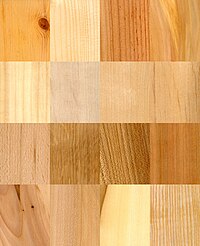
Photo from wikipedia
Deadwood in tropical ecosystems represents an important but poorly studied carbon (C) pool. Biologically mediated decay of this pool occurs by both saprotrophic microbes and macro‐invertebrates, such as termites. The… Click to show full abstract
Deadwood in tropical ecosystems represents an important but poorly studied carbon (C) pool. Biologically mediated decay of this pool occurs by both saprotrophic microbes and macro‐invertebrates, such as termites. The activity of these decay agents is influenced by abiotic conditions, especially water availability in tropical systems. While saprotrophic microbial activity is directly controlled by moisture, termites employ various morphological and behavioural modifications that should allow for continued activity in dry conditions. We therefore hypothesized that the relative role of termites would be enhanced in the dry season and a dry compared to a wet site. We deployed a novel wood bait (Pinus radiata) at two sites (rainforest and savanna), with or without access holes cut into termite‐excluding mesh. Mass loss from wood baits was measured after a dry season and after a full dry/wet annual cycle. Mass loss was higher at the rainforest site, demonstrating the overall role of moisture in driving wood decay. Counter to expectations, we found no evidence that the relative role of termites was higher at the dry site, nor during the dry season. However, the prevalence of termites was higher in the savanna compared to the rainforest. While termites clearly impact wood decay, these findings indicate that the relative importance of termites in the fate of deadwood may not reflect their mere presence within and across ecosystems. If moisture availability shifts under climate change, our results suggest similar functional responses between termites and saprotrophic microbes in driving C loss from deadwood.
Journal Title: Austral Ecology
Year Published: 2018
Link to full text (if available)
Share on Social Media: Sign Up to like & get
recommendations!